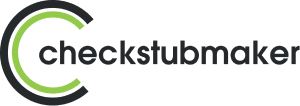
There are many advantages to self-employment; being your own boss means the freedom to set your own goals, work the hours you want to work, and reap all of the rewards for your own effort. However, with self-employment comes other responsibilities that may not seem quite so advantageous. For example, a self-employed individual is expected to pay relevant taxes, and to accurately document cash returns. This requires a
self-employment ledger.
What Is a Self Employment Ledger?
A self-employment ledger is a detailed record of a self-employed individual’s relevant expenses and incomes associated with operating their business. A self-employment ledger may take many different forms, including a hand-documented ledger book, a spreadsheet, an accounting program, a document from an accounting service, or any other comprehensive record cataloging your cash returns.
Why Do I Need a Self Employment Ledger?
While functionality and ease of use should certainly be a concern, particularly for those self-employed individuals who need to consider a range of income sources, a self-employment ledger primarily needs to be
accurate. This is because your self-employment ledger provides the ability to track your taxable self-employment income.
Without a larger organization employing you and taking responsibility for accounting-related tasks, the burden of verifying your business’ income sits squarely on your shoulders. A reliable self-employment ledger makes preparing and filing taxes a much simpler process. Similarly, effective documentation of self-employment income corroborates your income and expenses and is valuable when applying for loan applications or government healthcare subsidiaries. Finally, a well-organized self-employment ledger may help improve forecasting, allow you to create a more strategic tax plan, and play a key role in managing your finances.
Simple self-employment ledger forms are available for free in many locations online. While some forms are more or less detailed than others, they should include enough information to be easily and accurately decipherable. Ledger forms often include columns for the date, the payment received, the service or goods provided, and the customer’s name.
The most important consideration when setting up or filling out a self-employment ledger form is whether it’s easy to keep up to date. As such, some individuals prefer to use very straightforward self-employment ledgers, sometimes consisting of only the most essential information. There is no standardized form, so feel free to tweak the design and format of any template you use to better fit your needs and preferences — as long as it’s easy to follow and the information is accurate, it should be acceptable for most institutions.
How Do I Fill out a Self Employment Ledger?
Because there is no standardization of self-employment ledgers, there’s also no single accepted process for filling one out. That said, most individuals do follow a similar set of steps as they populate their self-employment ledgers. The steps are as follows:
- Record your gross incomes
As soon as you receive payment for a product or service, record the amount received, the type of income (cash or check, or accounts receivable) as well as the date it was received. These amounts should be grouped in your self-employment ledger according to month, for easier review.
- Record your business expenses
Businesses expenses may have a significant impact on the amount you pay in taxes. Recording all of your tax-deductible expenses in your self-employment ledger will help ensure that you get the best possible tax return. Deductible expenses may include major business-related purchases such as tools, machinery, software, and more. For home-based businesses, deductions may also include a certain percentage of home expenses. Include the date that each expense was accrued, and a small note describing what the specific expense was. If you are unsure of which expenses can be deducted, consult a tax professional.
- Review and tally up your totals
At the end of each month, review your ledger for any inaccuracies or unintentional omissions. Tally up your total incomes and expenses, and record those numbers in a separate column.
Keeping your self-employment ledger up to date is essential. That said, you may not always have the time to break focus from other tasks to fill out columns or add up totals. When this happens, online check stub makers can help ensure that important details don’t get lost in the shuffle.
Online Check Stub Makers for Self Employment Ledgers
Reliable documentation is essential to maintaining an accurate self-employment ledger, allowing for easy review and auditing. Check Stub Maker offers a free, online
paystub generator so that you can more easily record your hours worked and pay received. Our paystub generator allows self-employed individuals to create check stubs that carry the same authority as those issued to employees by established businesses and can be used for proof of identification and employment.
Fast and professional, Check Stub Maker provides the information you need, to keep your self-employment ledger accurate and up to date. Fill out the online paystub generator today! Because when it comes to maintaining your self-employment ledger, being independent shouldn’t necessarily mean having to do everything yourself.
Author: CheckStubMaker.com
 There are many advantages to self-employment; being your own boss means the freedom to set your own goals, work the hours you want to work, and reap all of the rewards for your own effort. However, with self-employment comes other responsibilities that may not seem quite so advantageous. For example, a self-employed individual is expected to pay relevant taxes, and to accurately document cash returns. This requires a self-employment ledger.
There are many advantages to self-employment; being your own boss means the freedom to set your own goals, work the hours you want to work, and reap all of the rewards for your own effort. However, with self-employment comes other responsibilities that may not seem quite so advantageous. For example, a self-employed individual is expected to pay relevant taxes, and to accurately document cash returns. This requires a self-employment ledger.
